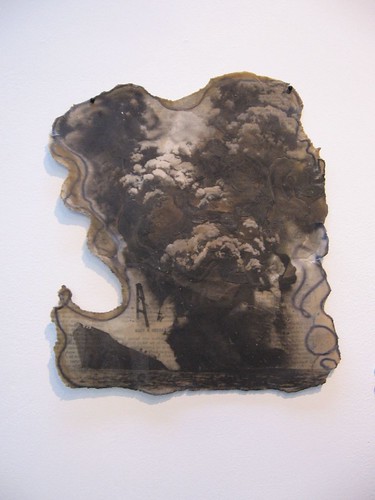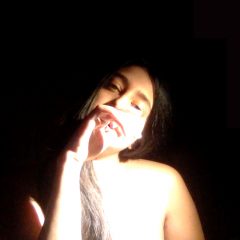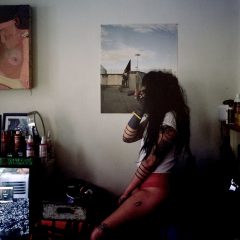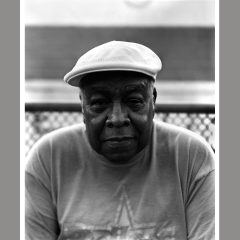[This is the third in several ultra-brief posts I hope to get up this week about shows I’ve seen recently that have given me tremendous pleasure or piqued my interest in some way. I’m sort of overwhelmed with outside-the-blog life, but I really wanted to tell you about this stuff.–libby]
Who couldn’t love an exhibit named The Best Ship is Friendship”? It’s the two-man exhibit of work by Zachar Vaks (3axap Bakc) and David Bratton at Little Berlin, until the 24th. What these two young artists have in common is not just their friendship, but the use of alchemy and process in their work.
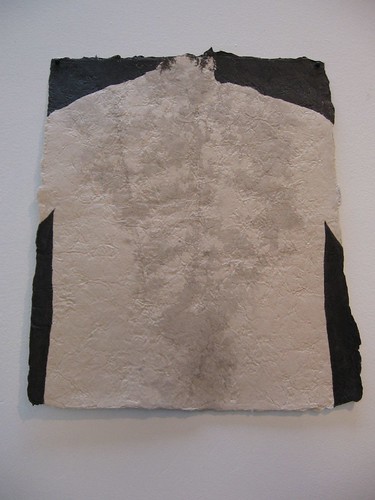
David Bratton, Fern Study, ink on handmade paper
Bratton is the more conservative of the two, his work falling within what people expect to see in art galleries–something rectangular and arty. Some of the pieces are quite beautiful, ink drawings dipped in water, and poetic, often landscape-related forms.
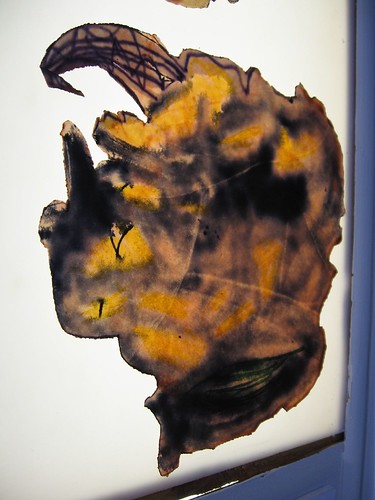
Zachar Vaks, from the Marinated and Cooked Drawings series
Vaks is on another planet altogether. His works are often scraps of cut or torn paper with scribbles, dipped in wax, drizzled in clove oil or some other evocative thing, and cooked until the wax merges with the paper to form a kind of parchment or skin-like feeling (see Roberta’s post here). Some of them look positively luminous, displayed on a light table. Many of them look like maps. But scraps is the operative word here.
Yet they feel like a serious endeavor, an effort to recapture a feeling or essence. There’s disturbance, worry in these pieces, and also a romance with the materials and the process. The lines disappear over time, their impression all that remains. These works are about loss and disintegration.
I am reminded of Sigmar Polke, and his harsh alchemical experiments, done on a grand scale and reflecting large concerns about the nature of things–and people. These are the opposite scale, measured in single-digit inches.
Themes of family also appear in Vaks’ work. His paintings, which make me think of the floaty Marc Chagall as a German Expressionist, also are extremely personal–and not particularly ingratiating. The paint is a reticent surface in this work, dragged by the brush. The people are blobby. And yet, in the maelstrom of what’s on the canvas, there’s a struggle to wrap the paint around feelings.
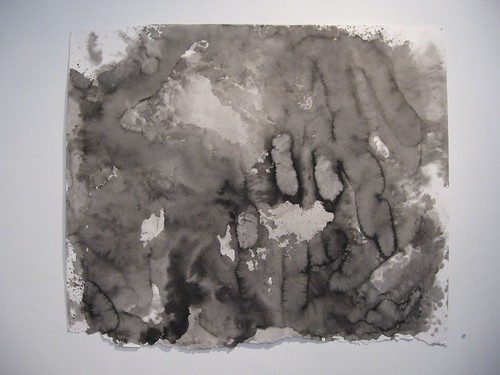
Bratton, on the other hand, makes work that is ingratiating and full of luxurious texture. In the context of Vaks’ weirdness, it seems almost proper.
But Vaks, for all his weirdness, is starting to get under my skin.
Show runs to Nov. 1.


